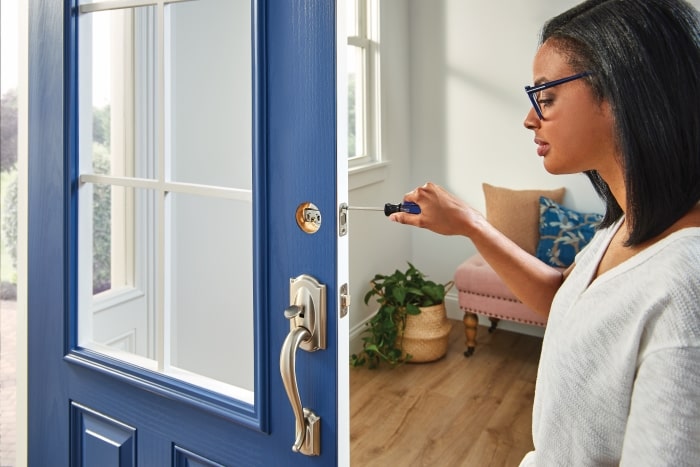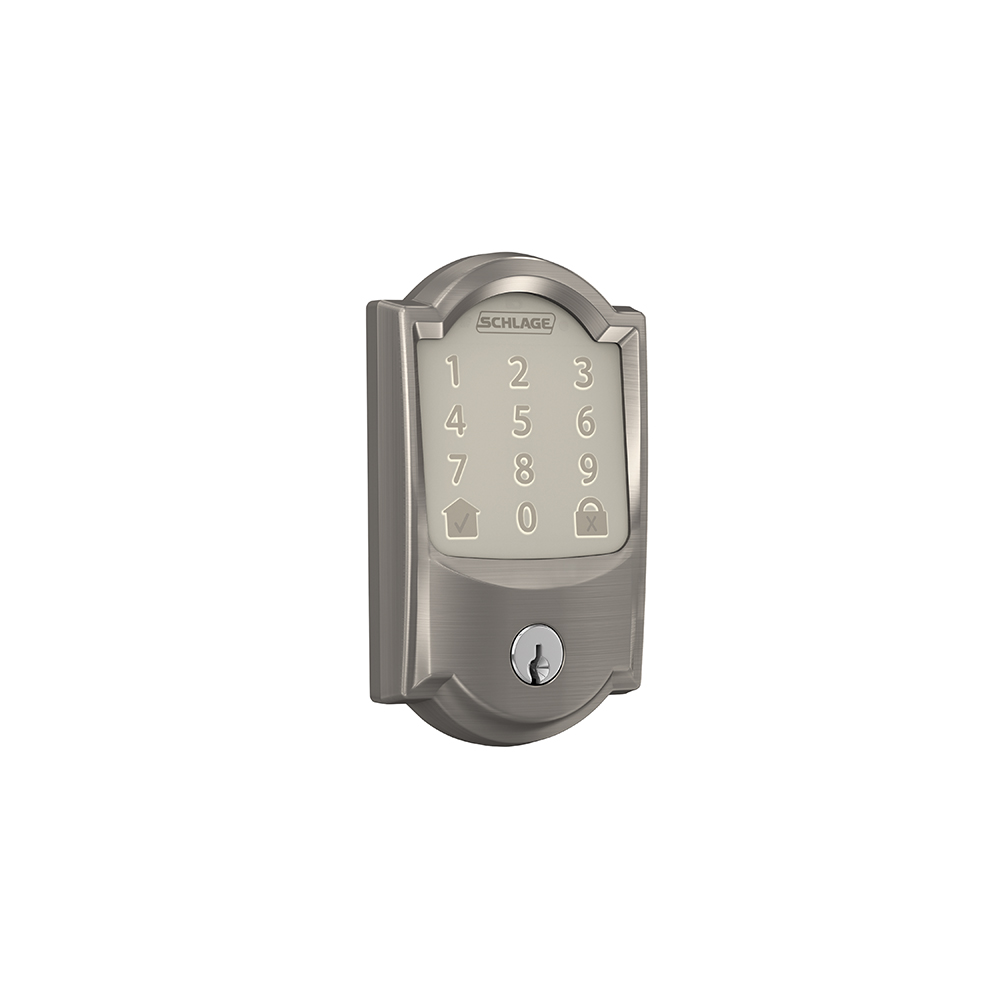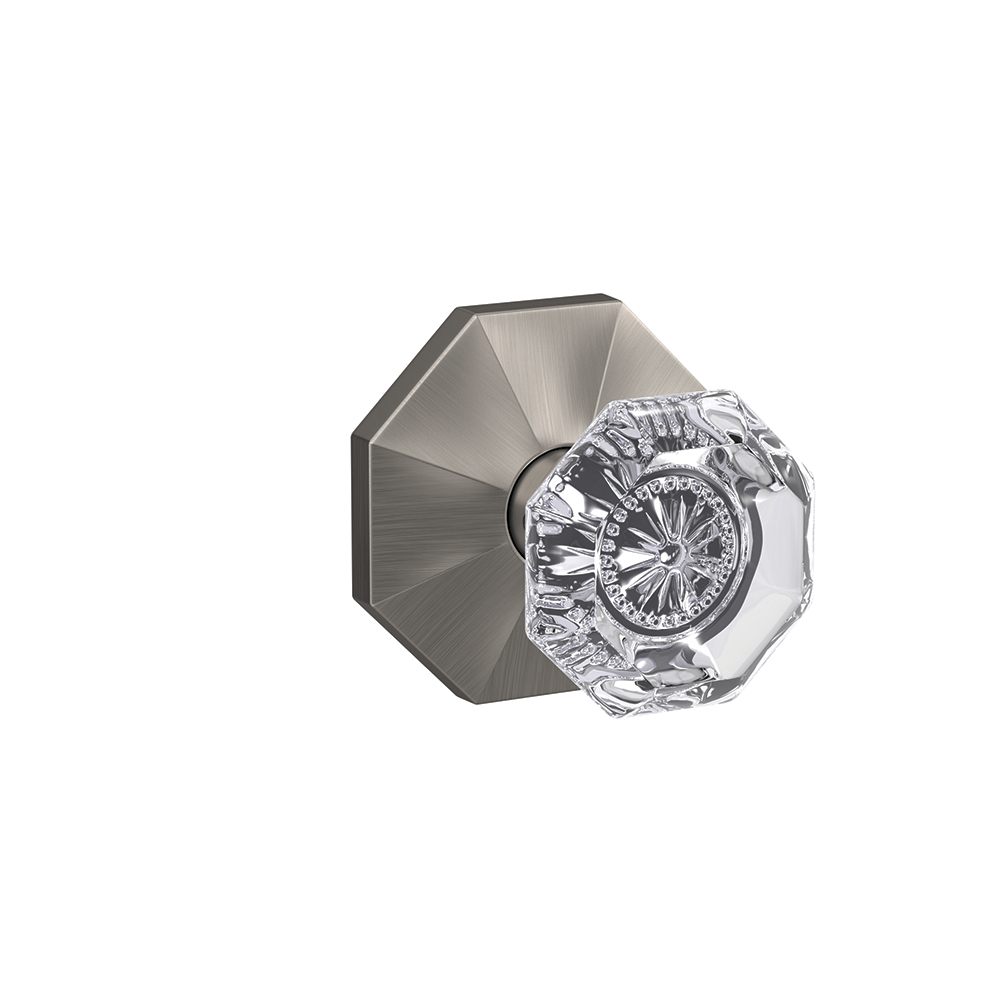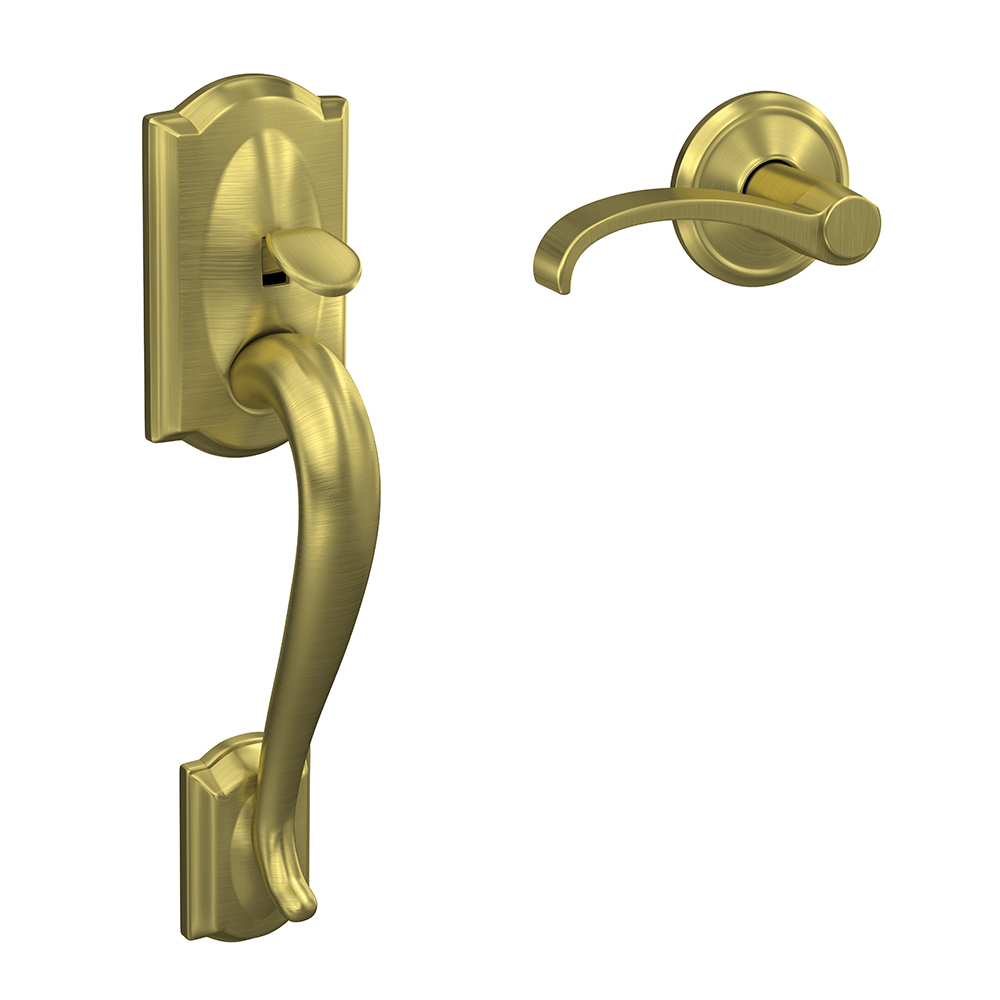How to fix a door that won’t latch.
Monday, June 12, 2023
Use this checklist and our suggestions to get your new lock and door working in perfect harmony.
You’ve just bought a new lock and for some reason it’s not fitting on your door and locking like it should. One possible reason for this is that your door isn’t properly aligned. Poor alignment can occur because your house has settled or shifted over time, the door frame is old or warped, or the door is sagging on its hinges.
Luckily, fixing the alignment of your door doesn’t have to be a chore. Use this checklist and our suggestions to get your new lock and door working in perfect harmony.

Identify why your door doesn't shut properly
1. Does your door easily latch during certain times of the year but not others?
If your door closes and latches easily during some seasons but not others, this may be a sign that changes in temperature or moisture are causing your door to warp, even just temporarily. We recommend waiting until it is not fitting properly to make adjustments at that time.
2. Is weather stripping causing your door to fit too snugly in its frame?
Weather stripping is great for minimizing drafts and noise. Just make sure that it is not so thick that it obstructs the bolt or prohibits it from entering the door frame’s bolt pocket. If weather stripping is the culprit behind your lock struggles, try changing to a thinner weather strip or adjusting the strike plate.
3. How to tell if your door won’t latch because of a strike plate issue.
When you adjust the strikes - the metal plates that surround the bolt or latch pocket in the door frame – it is important to first determine where the bolt is catching. If your door won’t latch in the strike plate, slowly lock and unlock the deadbolt several times. The deadbolt is probably hitting or rubbing on just one or two sides of the bolt strike. You will want to know where those points of interference are. This Old House has a great tip: Put some chalk – lipstick also works – on the bolt before locking and unlocking it. You’ll then be able to see a chalk smear on the strike where it is rubbing.
At that point, you’ll know where to remove obstructing material in the bolt hole using a chisel. You can also use these steps from Family Handyman to learn how to raise or lower the strike plates if your alignment is off by a larger margin.
4. Do you have to push, pull or lift your door to lock it? How to fix a sagging door.
This can be caused by different things, and so there are a few possible corrections you can make. First, check to see if moving the bolt strike helps. If your knob or lever also locks, it may help to move the latch strike as well. For example, if you have to lift your door to lock it, that could be a sign that your bolt or latch is hitting the bottom of the strike rather than extending fully into it. Use the steps above to adjust the strike.
Trouble locking your door can also occur when worn or loose hinges cause your door to sag. Here are two options for how to fix a sagging door. You can replace the hinges so that they fit more securely on the door frame. Or you can add shims under the hinges.
5. Is the bolt pocket 1” deep?
If the bolt pocket is not deep enough or placed correctly, the bolt cannot extend fully, making it so your door won’t latch. This can be corrected by enlarging the bolt pocket or changing the strike plate. To make the bolt pocket deeper, taller or wider, depending on where your bolt is dragging, use a chisel on the bolt hole until it is 1” deep and allows the bolt to fully extend without dragging.
If enlarging the bolt hole doesn’t fix your door that doesn’t shut properly, check the existing metal strike plate, which could be affecting the bolt pocket’s depth. Remove the strike plate from your door frame and use the deadbolt strike supplied with your Schlage lock instead. The supplied strike is the correct size and shape to allow the bolt to extend and retract as intended without dragging.
If you continue to experience minor rubbing of the bolt on the top or side of the strike plate, you will need an alternate strike and security plate with additional clearance. This replacement part is available by contacting Schlage customer support.
We're here to help
For more help checking your door alignment and prep, be sure to watch our step-by-step installation videos here. You can also find more tutorials and interactive instructions in our How-to-Center and FAQs.






/F51A_ELR608_COL_EXT_SL.jpg)







